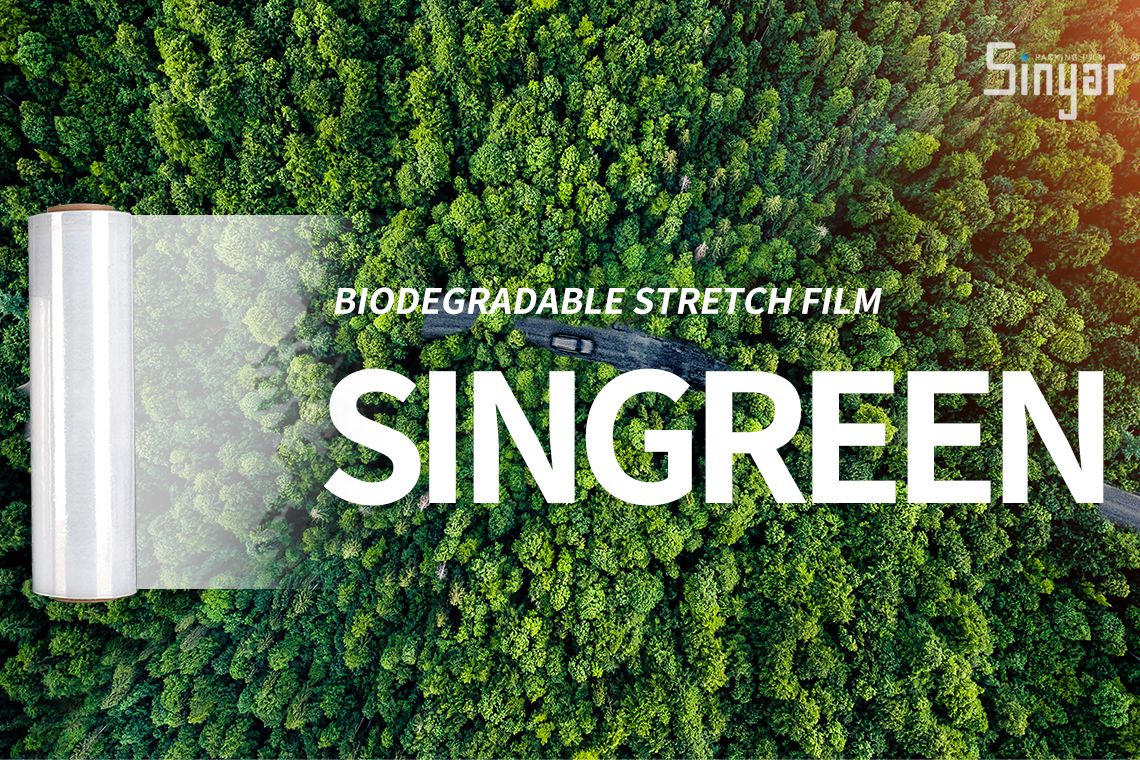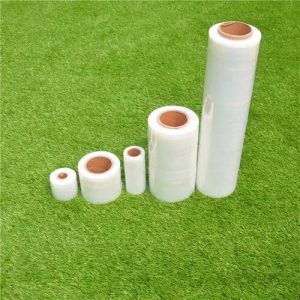In the vanguard of environmental consciousness, the narrative around packaging has dramatically shifted. Sustainability, once a mere trend, has become an imperative, with biodegradable stretch films emerging as a beacon of hope. This comprehensive discourse ventures into the realm of biodegradable stretch film manufacturers, unraveling the intricate tapestry of technology, innovation, and the challenges that sculpt this burgeoning domain.
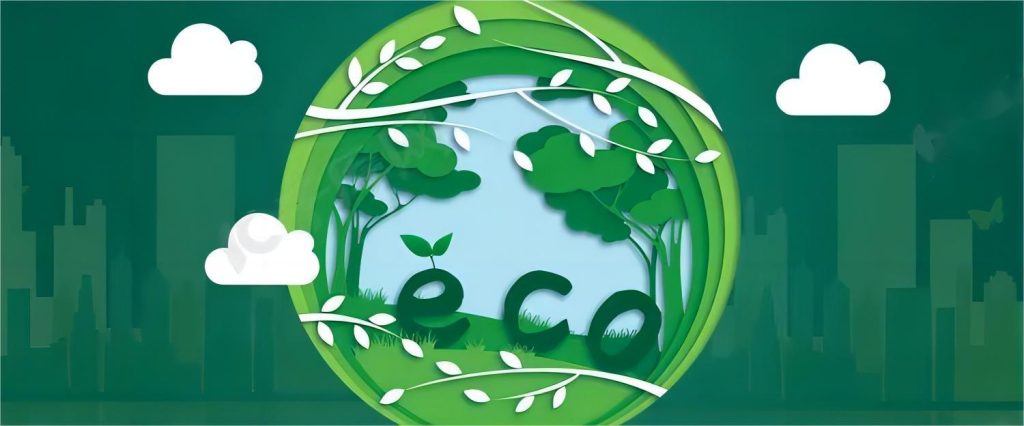
The Urgent Shift Toward Eco-Friendly Packaging Solutions
An eco-conscious zeitgeist, propelled by informed consumer bases and stringent regulatory landscapes, demands sustainable packaging solutions. Biodegradable stretch films stand at the forefront of this revolution, offering a greener alternative to the conventional plastic menace.
Defining Biodegradable Stretch Film: A Sustainable Alternative
Biodegradable stretch film distinguishes itself through its inherent capacity to decompose naturally, attributed to the biodegradable materials constituting its makeup. This section delves into the essence of what sets biodegradable stretch films apart, spotlighting their environmental benevolence.
The Green Chemistry Behind Biodegradable Stretch Films
Key Ingredients: From Plants to Polymers
The cornerstone of biodegradable stretch film innovation lies in the utilization of renewable resources. Plant-based polymers, pivotal in this green chemistry, undergo natural decomposition, reducing environmental impact and fostering a cycle of sustainability.
Key Materials and Processes: At the heart of these innovations are materials such as PLA (Polylactic Acid), PHA (Polyhydroxyalkanoates), and PBS (Polybutylene Succinate), derived from renewable resources like corn starch, sugarcane, and other biomass. The manufacturing processes have been refined to enhance the mechanical properties of these films, ensuring they meet the rigorous demands of various packaging needs while being compostable.
The mainstream degradable stretch film biodegradable plastic film roll on the market is PBAT+PLA. Sinyar launched the most suitable solution for the biodegradation of stretch film biodegradable plastic wrap-Chitosan Degradable Stretch Film.
Synthetic degradable plastics
PLA; PBS; PHA; PBAT
Note: Distinguish degradable、 biodegradable and copostable
Many degradable shretch film merchants will confuse these three concepts, although the keyword
is written as “biodegradable”, what is it exactly, is not easy to say.
Note: Distinguish degradable 、biodegradable and compostable
Degradable plastics Include plastics that can be degraded by physical and biological factors (light, heat, or microorganisms). Most of the products on the market are just ordinary plastics (such as PE) with biodegradable fillings.
There are many oxygen-degradable plastic stretch films on the market, which are low in price but not good for the environment and health – such plastics will only disintegrate into plastic fragments, and will not decompose and disappear in a certain time.
Biodegradable plastic: refers to a plastic that degrades under conditions such as soil in nature, and specific conditions such as composting conditions, caused by the action of microorganisms present in nature, and eventually completely degraded into carbon dioxide or/and methane, mineralized inorganic salts and water.
| Material | Comparison of degradation modes and rate |
| PLA | Industrial composting conditions (above 5O℃, aerobic flora) : the degradation rate of 84% in 58 days Anaerobic composting conditions (58℃, 60% humidity) : 30 days degradation rate 60% |
| PBAT | Moisture sufficient soil conditions: 5 months can be completely degraded Simulated seawater conditions (25℃ ±3℃): about 30-60 days can be completely degraded |
| Starch-based plastic | Anaerobic composting conditions (58℃): degradation rate of 85% in 90 days In soil environment (35℃): 60 days degradation rate of 35% |
Different from PBAT biodegradable stretch film, chitosan biodegradable stretch film can achieve complete degradation in the natural environment, without manual intervention. That is to say, it only needs sunlight, air, humidity, microorganisms and other elements of nature, without any artificial intervention and composting, it can achieve full biodegradation.
Degradation principle 1: natural transformation (pre-degradation)
Degradation Principle 2: Biodegradation (Post-Degradation)
1. Biodegradation auxiliaries will attract more microorganisms to gather and colonize
2. After the fusion of degradation auxiliaries and PE, the natural transformation increases the specific surface area of the material, making degradation efficiency higher.
3. The combination of chitosan and other biodegradation auxiliaries will stimulate microbial reproduction and secretion of degradation enzymes to achieve complete degradation in the natural environment.
Under natural conditions: In about two months, the molecular weight of PE decreased by about 60% to 80%.
• The substrate is polyolefin, and its toughness, elasticity and tensile strength are similar to those of ordinary stretch film
• It has a nourishing effect on the soil and makes it more fertile
• Degradation of more than 90% in 180-day
Remarkably, it only degrades in soil. So it can effectively extend the storage time.
| PBAT+PLA | Chitosan |
| The stretch film of PBAT+PLA has a short life cycle and a degradation period of 3-5 months. In the process of using the product, it is easy to age and crack. If the PBAT+PLA stretch film is used to wrap the items, there may be a danger of the items being dumped. | The life cycle of chitosan stretch film is 24 months, and the degradation period is 12-24 months, which is more suitable for the needs of stretch film. Its physical properties are better than PBAT. The functionality of the stretch film does not change during 24 months of use. |
| PBAT+PLA stretch film is compostable degradable plastic, which needs to be degraded under certain composting conditions, and the implementation conditions are relatively high. Full degradation cannot be achieved in the natural environment. | PBAT+PLA stretch film is compostable degradable plastic, which needs to be degraded under certain composting conditions. Full biodegradation can also be achieved under natural conditions. |
| The cost of PBAT+PLA stretch film is high, which is not recognized by many countries | The cost of chitin stretch film is controllable. |
The Manufacturing Process: Harmonizing Nature with Technology
The fusion of natural ingredients and avant-garde technology births biodegradable stretch films that are not only eco-friendly but also efficacious in application. This synthesis underscores a commitment to environmental stewardship without compromising on packaging integrity.

Biodegradability vs. Compostability: Clarifying the Concepts
A critical examination of biodegradability versus compostability elucidates the nuanced differences between these terms, providing clarity on their relevance to stretch films and their environmental implications.
Compostable plastics: To better define degradable, relevant institutions in Western countries have introduced compostable standards (such as the ASTM6400 standard in the United States). As long as the product meets the standard and passes the institutional test, a certificate can be obtained to prove that the product is “compostable”, which is divided into household composting and industrial composting according to different composting conditions. That is to say, compostable plastics are to meet certain composting conditions.
Environmental Impact and Benefits
The environmental implications of switching to biodegradable stretch films are profound. Traditional plastic films, notorious for their persistent nature, contribute significantly to landfills and ocean pollution. Biodegradable options, however, decompose into water, carbon dioxide, and biomass within a few months to a couple of years, depending on the composting conditions.
Regulatory Landscape: Governments worldwide are implementing policies to curb plastic waste, with bans on single-use plastics and incentives for sustainable alternatives. These regulations are propelling the growth of the biodegradable stretch film market, as manufacturers rush to comply and capitalize on the emerging opportunities.
Reduced Carbon Footprint: The production of biodegradable stretch films typically consumes less energy and emits lower volumes of greenhouse gases compared to conventional plastics. This transition aids in the global efforts to combat climate change by reducing the carbon footprint associated with packaging.
Promoting Circular Economy: By embracing biodegradable stretch films, manufacturers are contributing to a circular economy. This approach emphasizes the reuse and recycling of resources, ensuring that products and materials are utilized efficiently and sustainably.

Spotlight on Innovation: Pioneers in Sustainable Packaging
This narrative arc celebrates the trailblazers in biodegradable stretch film manufacturing, whose innovative strides are instrumental in sculpting the future of sustainable packaging. Their pioneering efforts underscore a collective aspiration towards ecological harmony.
The Environmental Impact: A Comparative Analysis
The Lifecycle of Biodegradable Stretch Films
An exploration into the lifecycle of biodegradable stretch films unveils their environmental superiority over traditional plastics, accentuating their role in mitigating pollution and championing sustainability.
Traditional Plastics vs. Biodegradable Alternatives: A Greener Verdict
A comparative scrutiny reveals the unequivocal advantages of biodegradable stretch films. Their contribution to reducing environmental pollution and fostering a sustainable future is unparalleled, marking a decisive step away from the ecological detriments of traditional plastics.
Versatile Applications: Bridging Industries with Sustainability
Revolutionizing Food Packaging
Biodegradable stretch films are redefining the food packaging industry, offering sustainable solutions that ensure product freshness while minimizing waste, thereby revolutionizing the sector with an eco-conscious ethos.
Expanding Horizons: Beyond Food Packaging
The utility of biodegradable stretch films extends into diverse industries, showcasing their versatility and broad appeal as a sustainable packaging solution. This expansion heralds a comprehensive adoption of green practices across sectors.
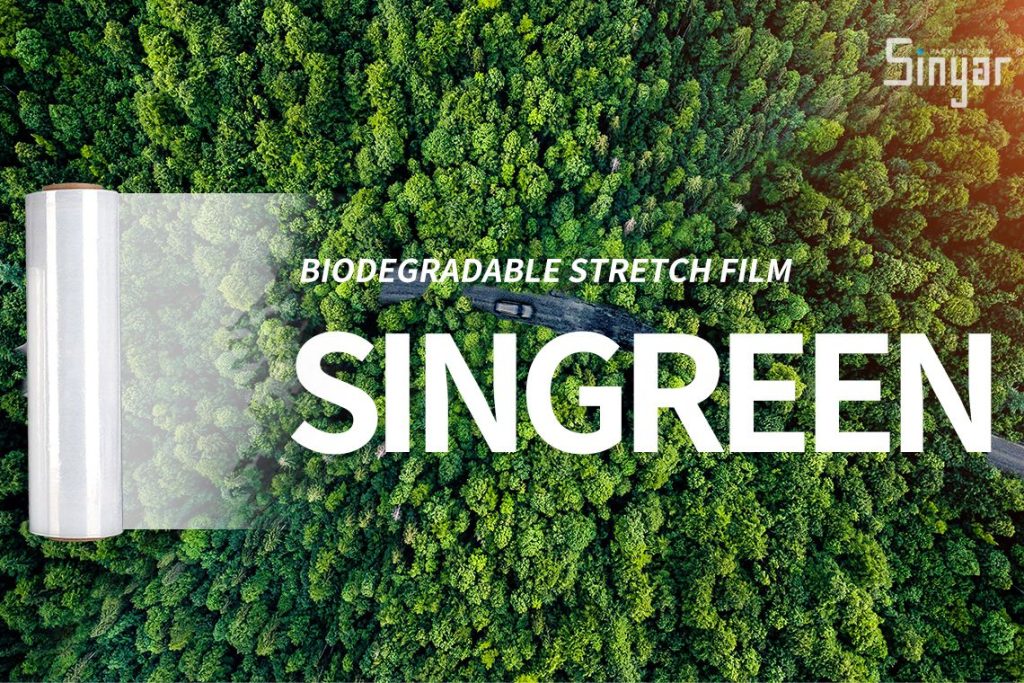
Overcoming Challenges: The Road Ahead for Manufacturers
Balancing Innovation with Market Dynamics
Manufacturers are tasked with navigating the intricate balance between technological innovation, market demands, and consumer expectations, striving to align their offerings with the evolving landscape of sustainable packaging.
The Crucible of Research and Development
Ongoing research and development are the linchpins in surmounting technical challenges, and enhancing both the performance and environmental credentials of biodegradable stretch films. This relentless pursuit of innovation paves the way for future advancements in sustainable packaging.
Empowering Consumers: A Guide to Biodegradable Stretch Films
Deciphering Labels and Certifications
This guide empowers consumers to navigate the landscape of biodegradable stretch films, elucidating labels and certifications that denote sustainability, thereby enabling informed purchasing decisions.
Advocating Responsible Usage and Disposal
Practical advice on the judicious use and disposal of biodegradable stretch films emphasizes their environmental benefits, advocating for responsible consumer behavior to maximize their ecological potential.
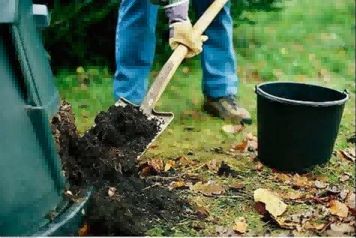
Looking Forward: The Evolving Landscape of Sustainable Packaging
Anticipating Trends and Technologies
The horizon of biodegradable stretch films is dotted with emerging trends and next-generation technologies, forecasting an era of enhanced sustainability and innovation in packaging solutions.
The Role of Policy and Advocacy
Government policies and advocacy efforts play a pivotal role in fostering the adoption of biodegradable stretch films, driving the agenda for sustainable packaging and ensuring a greener tomorrow.
Conclusion: A Collective Journey Toward Sustainability
The quest for sustainable packaging is a collective endeavor. Biodegradable stretch films signify a monumental leap forward, but their triumph hinges on the unified commitment of manufacturers, consumers, and policymakers to champion eco-friendly solutions.

FAQs: Navigating the World of Biodegradable Stretch Films
This section addresses common queries about biodegradable stretch films, providing clarity on their composition, decomposition timeline, performance metrics, and the criteria for discerning genuinely sustainable products, alongside the challenges manufacturers face in this innovative landscape.
What exactly makes a stretch film biodegradable?
Biodegradable stretch films are made from materials that can break down naturally into non-toxic substances, facilitated by microorganisms.
How long do biodegradable stretch films take to decompose?
The decomposition time varies based on environmental conditions but is significantly less than that of traditional plastics.
Can biodegradable films perform as well as traditional plastics?
Yes, with ongoing innovations, biodegradable films are increasingly matching the performance of traditional plastics in strength and flexibility.
How can I ensure I’m choosing a genuinely sustainable product?
Look for certifications and labels that indicate the film’s biodegradability and compostability.
What challenges do biodegradable stretch film manufacturers face?
Challenges include balancing cost and performance, consumer education, and navigating regulatory landscapes.

